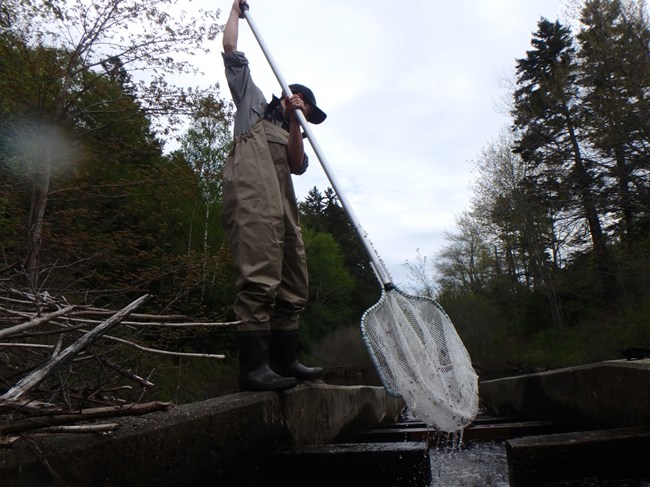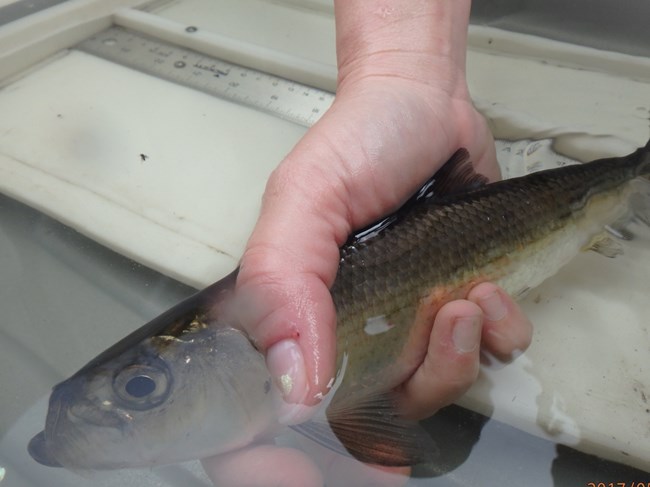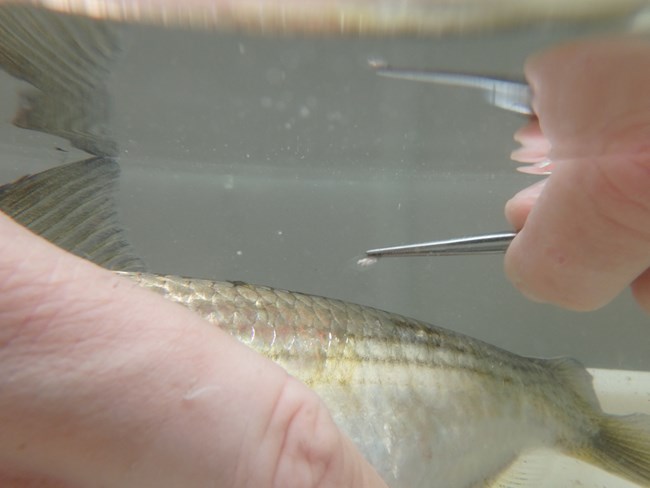Last updated: September 28, 2021
Article
Alewives in Acadia

Acadia Wildlife Staff/nps
While Acadia’s terrestrial wildlife is utterly majestic, there are no less fascinating stories playing out just underneath the surface of the park’s streams and ponds. Every spring a species of herring known as an alewife migrates in droves from the ocean, up streams along the New England coast to breed and lay eggs. Unlike pacific salmon species, which die after spawning, adult alewives will brave the journey back to the ocean, hoping to survive yet another year to breed the following spring. Alewives make this adventurous breeding journey as many as four times. Those that don’t survive feed a plethora of other species: mink, eagles, vultures, raccoons, even bears.

Acadia Wildlife Staff/ NPS

Acadia Wildlife Staff/ NPS
